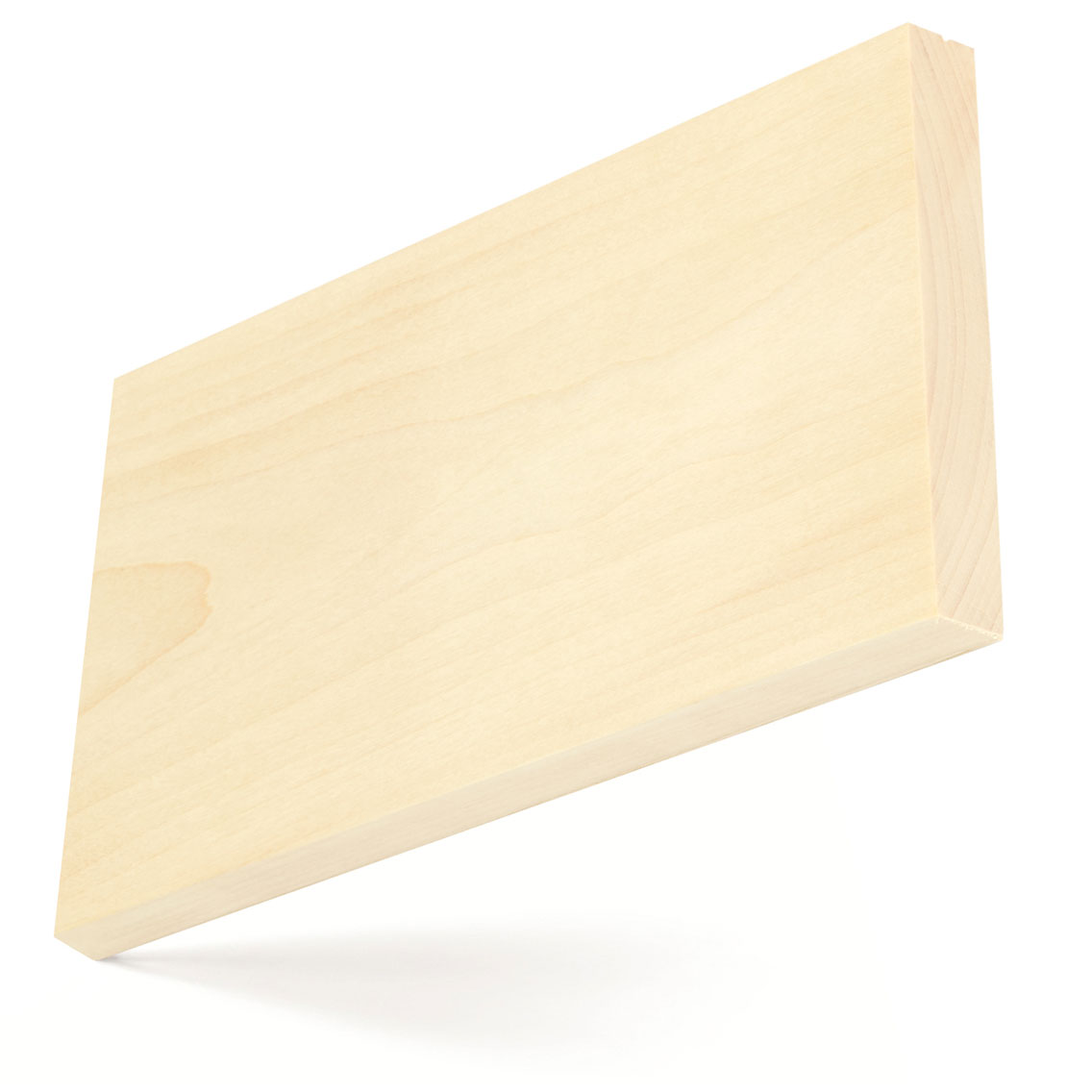American aspen
American aspen is a true poplar, growing widely in the USA, particularly in the Northeast, Lake States and across to the Rockies. The genus Populus is composed of many species, which all look alike microscopically. However, aspen is completely different to tulipwood, often referred to as yellow poplar in the USA despite not being a Populus.
Latin Name
Populus tremuloides
Other Common Names
white poplar, trembling aspen, popple

Forest Distribution
American aspen trees grow in dense stands that are easily sustainable but are commercially less important than some other American hardwoods.Tress can grow up to 120ft (48m) and up to 4ft (1.2m) in diameter. Due to genetic variability trunks can either be quite cylindrical with little taper and few limbs, or crooked and contorted. Aspen is one of the species that benefits from clear-cutting to regenerate, being shade intolerant, and regrows both from seedlings and root suckers. It is a natural pioneer species after forest fires. The four main aspen producing states are Minnesota, Wisconsin, Maine and Michigan.
FOREST GROWTH
Forest Inventory Analysis (FIA) data shows U.S. aspen growing stock is 637 million m3, 4.3% of total U.S. hardwood growing stock. American aspen is growing 10.4 million m3 per year while the harvest is 8.9 million m3 per year. The net volume (after harvest) is increasing 1.5 million m3 each year.
LCA Tool
seconds
Material Availability
Aspen from the USA is available as sawn lumber and veneer. Lumber tends to be available mainly in thinner sizes, 4/4” (1’’ or 25.4mm) and 5/4” (1.25” or 32mm), although limited volumes of 6/4” (38mm) and 8/4” 52mm may be available from some suppliers.
Wood Description
The sap of aspen is white and the heartwood is light brown with only a small difference between the two. The wood of aspen has a fine uniform texture and straight grain.
Mechanical Properties
Aspen has low density and the wood is light and soft. It has a very low bending classification with low strength and stiffness but has medium shock resistance.
-
0.38
Specific Gravity (12% M.C.)
417 kg/m3
Average Weight (12% M.C.)
9.20%
Average Volume Shrinkage (Green to 6% M.C.)
57.918 MPa
Modulus of Rupture
8,136 MPa
Modulus of Elasticity
29.304 MPa
Compressive strength (parallel to grain)
1,557 N
Hardness
Oiled / Un-Oiled Appearance


Performance
- Aspen machines easily but can produce a slightly fuzzy surface when cut. It does not split when nailed and it turns and sands fairly easily and holds paint and stain well to produce a good finish, but care is needed where the surface is fuzzy. Aspen has low to moderate shrinkage and good dimensional stability. It is similar in performance to other true poplars grown around the world.
- The wood is non-resistant to heartwood decay and is resistant to preservative treatment.
Main Uses
This fast growing hardwood, which is common across the USA, is used for furniture parts, particularly drawer sides. It is also used in a variety of applications including doors, interior joinery, mouldings and picture frames. Specialist uses include seating in saunas due to its low conductivity of heat and in food packaging and chopsticks due to lack of odour and taste. Aspen is also used for pulp for paper.